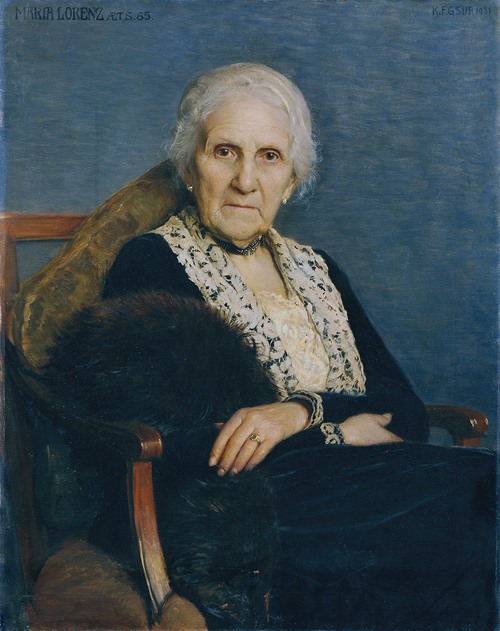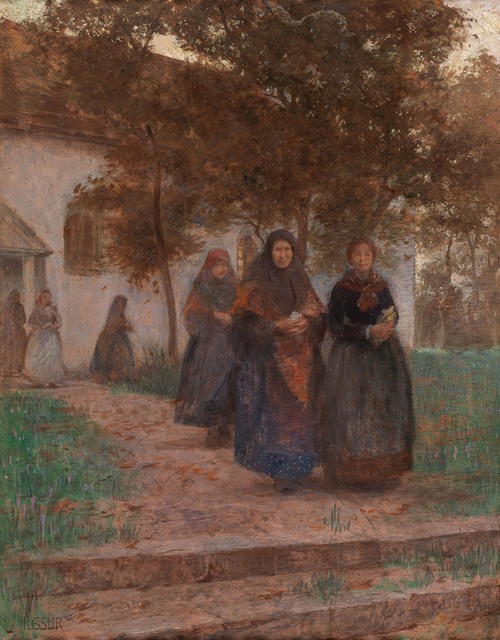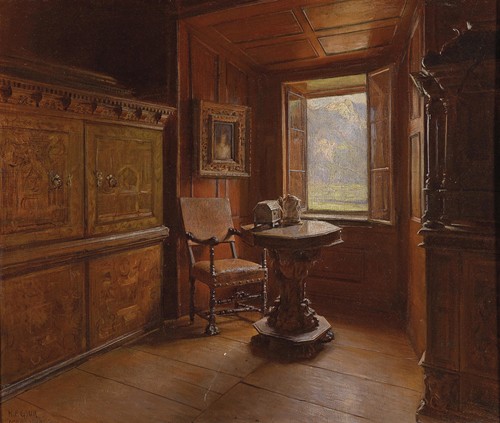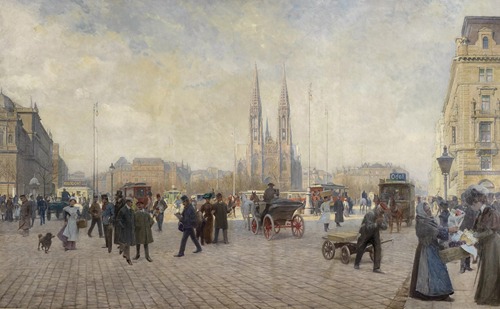






Karl Friedrich Gsur was an Austrian painter.
Karl Friedrich Gsur was the son of the well-known sculptor and engraver Karl Ludwig Gsur. He was a noted genre, landscape and portrait painter during his lifetime.
Gsur completed his studies at the Vienna Academy, where, among others, Siegmund L'Allemand was his teacher. Study trips followed, taking him to Tunisia, France and the Netherlands. From 1905 Gsur was a member of the Association of Fine Artists, whose Silver Jubilee Medal he received in 1936.
Karl Friedrich Gsur was a Landsturm officer in the field from the first day of the First World War, was initially an orderly officer in the 25th Infantry Troops Division, which consisted of the Infantry Regiments 4 (“Hoch- und Deutschmeister”), 84 (“Baron von Bolfras” ) and which included Copaljäger Battalion 10. He took part in the battles at Komarów, Lemberg , on the Bug and at Sapanów, became personal adjutant to Archduke Peter Ferdinand in May 1917 and was promoted to captain in November. From October 1914 Gsur was a member of thekuk war press quarters and subsequently used his three longer home holidays to develop the studies he had sketched at the front into large paintings .
The artist and soldier was awarded the Signum Laudis and the Knight's Cross of the Franz Joseph Order with the war decoration and was considered a "recognized excellent war painter" who made a special contribution to the popularization of the Imperial and Royal Army . His works could be seen in most of the exhibitions at the war press headquarters and also served as models for color reproductions for the benefit of the war relief organization. Gsur also portrayed high-ranking soldiers in the army, including Emperor Karl I of Austria and the then Major General Adolf von Boog. Exhibitions of his works were regularly organized in the Künstlerhaus Wien.
Karl Friedrich Gsur died in 1939 and was buried in a grave of honor in the Vienna Central Cemetery.






